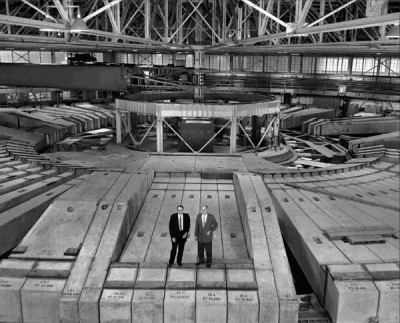A bricklayer lays the future’s foundation

Have you come across “concrete jungle” in conversations or in your readings? The term is used to refer to a modern city or an urban area that is filled with large buildings, sometimes closely crowded. With little space for trees or grass, the term also carries the connotation of places that are severely competitive, unwelcoming, or even dangerous.
For someone from the past generations, or even those now living in villages with wide open areas, most of our urban cities might feel like concrete jungles. And that might actually include Joseph Aspdin too, an English bricklayer who roamed the Earth 200 years ago and is often credited with the invention of portland cement.
Portland cement
Portland cement is the most common type of cement used these days around the world as a basic ingredient for concrete, mortar, and stucco. A mixture of clay and limestone or other similar materials are heated to a high temperature, just short of fusing. This is then finely pulverised, resulting in portland cement, which sets under water.
Born in Leeds, England in 1778, Joseph Aspdin was the eldest of Thomas Aspdin’s six children. As was common in those days, Joseph followed in his father’s footsteps to become a bricklayer and mason while still in his teens.
Aged 31, Aspdin married Mary Fotherby in 1811, with their marriage certificate stating his occupation as “bricklayer”. By 1816, however, Aspdin had his own business in the field and began tinkering with the hopes of making it big.
Possessed with ambition and curiosity, Aspdin experimented with a number of cement formulas for years before arriving at the one that he patented in 1824. On October 21 that year, Aspdin was granted a patent which was titled “An improvement in the Modes of Producing an Artificial Stone”.
Marketing gimmick
Aspdin called his product portland cement, explicitly mentioning the same in the patent that he received. He coined this name after portland stone, a stone quarried on the island of Portland on the south coast of England that was famous for building work.
Similar in looks and colour and almost as hard when dry, portland cement was a lot like portland stone. And as portland stone was used across Britain in high-status buildings, Aspdin’s naming was a fine marketing technique as it linked his new product in people’s mind with an existing, well-established, and popular product.
Vague? Too lightly burnt?
Even though Aspdin’s patent is vague in certain aspects and his product might have been too lightly burnt to be what we call portland cement now, the invention of portland cement is usually attributed to Aspdin. He certainly gave it its name, something that still remains in common use.
By the time Aspdin died in 1855, portland cement wasn’t famous yet. It took the work of others to get it to the form that we now know it, and its significance became plain only then. Portland cement’s greatest role was in making concrete, which turned out to be the primary building material from the 20th Century onwards.
Whether Aspdin actually invented portland cement will be a point that is up for debate. Nevertheless, members of the British Cement Makers Federation and the American Portland Cement Association cemented his place in history by raising a plaque in Leeds in 1924, 100 years after Aspdin had given “portland cement” in his patent.
Picture Credit : Google
